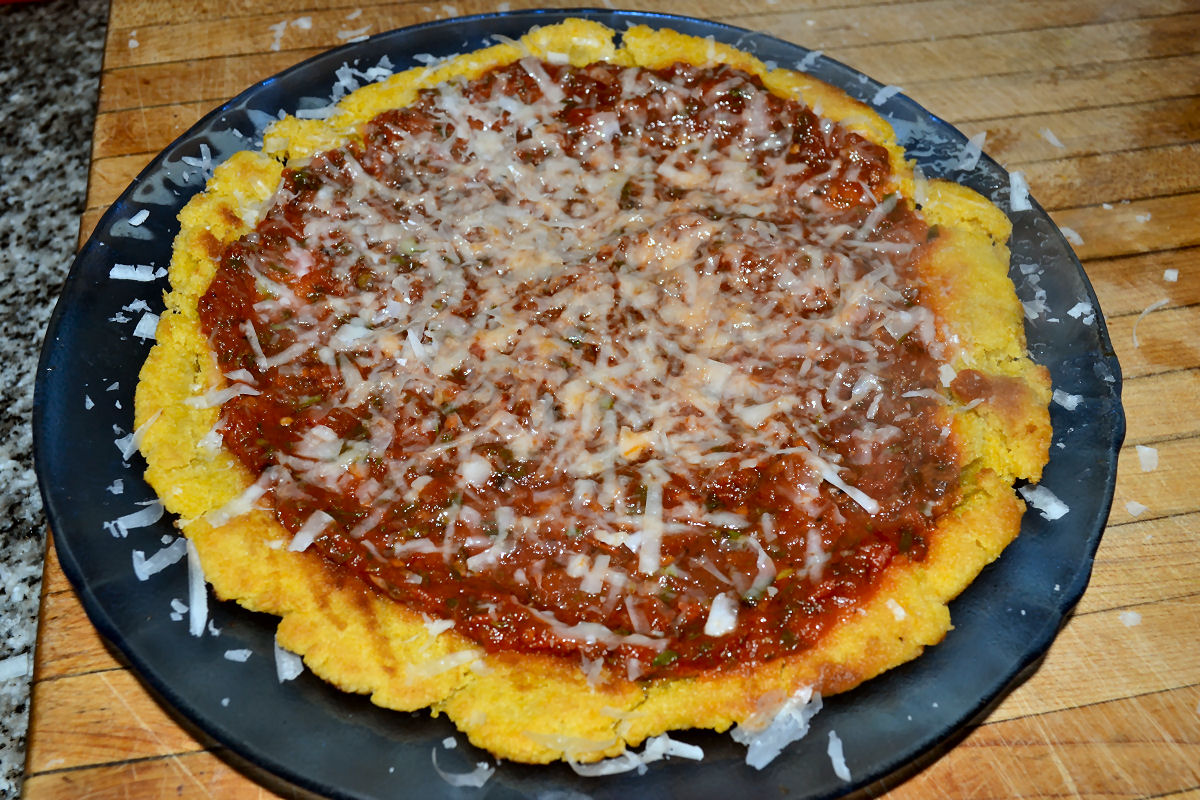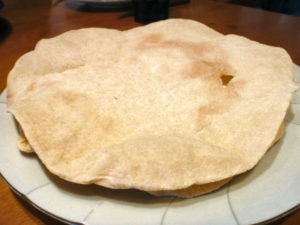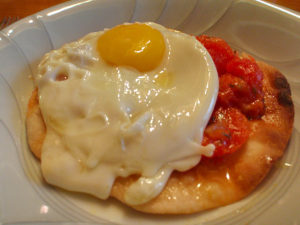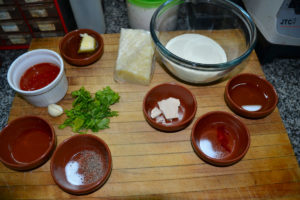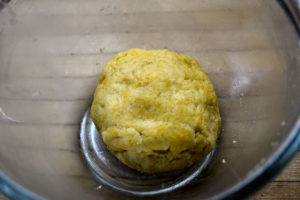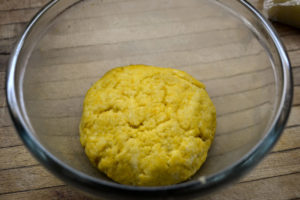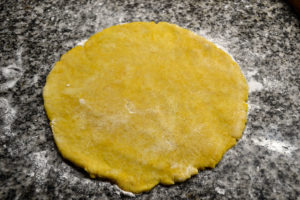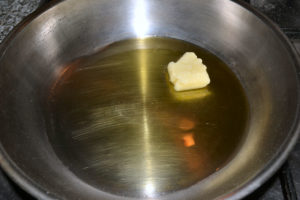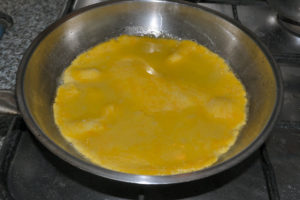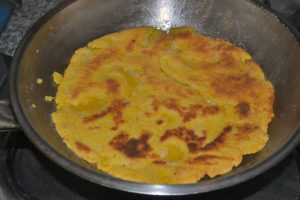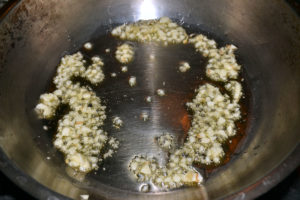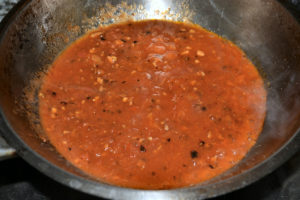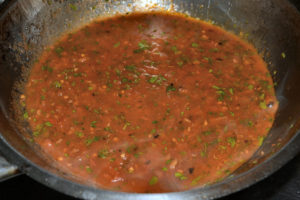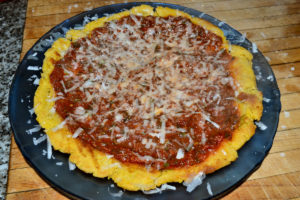This has to be one of the more unusual pastas I’ve encountered. It’s a very old traditional pasta from Sardinia, called Lunas de Serramanna. The pasta itself is just called a luna, or moon, Serramanna is a town in south-central Sardinia. In form, the lunas are almost like a sort of semolina flatbread or pizza, and it’s not exactly what springs to mind when one thinks about pasta. Then again, Sardinia has some unusual pastas, including the, in many ways quite similar, pane frattau. And, to be upfront, I’ve never actually seen this pasta in person, just in photos.
Pane frattau is made from the classic Sardinian flatbread, pane carasau – note, a bread, not a pasta – it’s a very crisp, dry, paper thin flatbread, baked in the oven or on a hot griddle. It’s a common, daily eaten flatbread throughout much of Sardinia, at least traditionally. Then for the “pasta” dish, it’s briefly soaked in boiling water to soften it, and topped with a saute of fresh tomatoes or a tomato sauce, and a fried egg. [This dish I’ve both seen in restaurants, for example here, and made here at home.]
Our mise-en-place – one note, the only recipe I could find for this online or in any of my books, was a batch for making six of these. For ease of division, and since I was making one portion for my own dinner, I divided all the ingredients by 5 – so a little bigger than traditional, but far easier to measure out. If you want to make a classic batch of 6, just quintuple all the amounts.
For the pasta itself – 100 gm coarse semolina flour, a pinch of ground saffron, 4 gm fresh yeast, pinch of salt, and 25 ml olive oil. It will also need a splash of water, just enough to get it to come together, but very little.
For the sauce – some crushed tomatoes (in this case, a single large tomato pulsed a few times in a food processor), garlic, parsley, olive oil, salt and pepper.
Additional – sheep’s milk pecorino, and a mix of equal amounts of olive oil and lard.
Mix the pasta ingredients together, with just enough water to form a soft dough. Using coarse semolina means this won’t be a particularly smooth dough, and it’s interesting in looking at the not very clear photo on the linked recipe, that his dough seems much finer. I think if I tried this again, I’d try it with finely ground semolina, the type I would more typically use for pasta, just to see how it turns out.
Let it rise, covered, in a warm place, until roughly doubled in size.
Roll out to what he describes as “a few millimeters thickness”. Again, going back and looking at his photo, his seems much thinner than mine, because it does puff up when it cooks.
Heat the olive oil and lard to the point where it just starts to smoke, over medium heat.
Fry the pasta round until golden brown on the underside…
…then flip and do the same to the other side. Remove to a paper towel to absorb any excess oil, then flip onto a plate (I found it easiest to invert the plate over the pasta on the paper towel and then flip the whole thing over and peel off the towel.
A simple, basic tomato sauce – saute chopped garlic in a little olive oil.
Add the crushed tomatoes and simmer for a few minutes.
Add the chopped parsley (and/or basil) to finish it and adjust the seasoning with salt and pepper.
Spoon the sauce over the luna, and cover well with grated pecorino. It comes out sort of crispy on the edges with a lightly crisp surface, and sort of spongy inside. The flavor of saffron is notable, and blends really nicely with the fresh tomato sauce. I’m not sure I would really make these again, other than for, perhaps, a specifically Sardinian meal, but it does give me some inspiration for other dishes, or even just adding a little saffron to a pizza crust if it’s going to work with the toppings.
